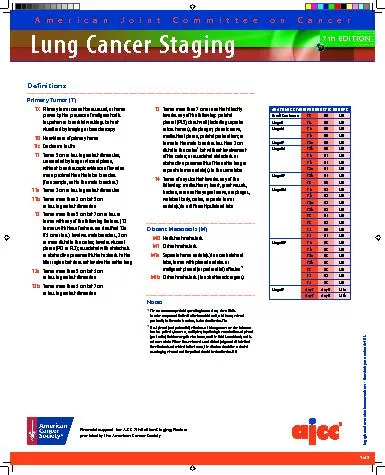PDF-Primary Tumor (T) TX Primary tumor cannot be assessed, or tumor prov
Author : giovanna-bartolotta | Published Date : 2015-10-31
7th EDITION ANATOMIC STAGEPROGNOSTIC GROUPSOccult Carcinoma TX N0 Stage 0 Tis N0 NotesThe uncommon supercial spreading tumor of any size with its invasive component
Presentation Embed Code
Download Presentation
Download Presentation The PPT/PDF document "Primary Tumor (T) TX Primary tumor can..." is the property of its rightful owner. Permission is granted to download and print the materials on this website for personal, non-commercial use only, and to display it on your personal computer provided you do not modify the materials and that you retain all copyright notices contained in the materials. By downloading content from our website, you accept the terms of this agreement.
Primary Tumor (T) TX Primary tumor cannot be assessed, or tumor prov: Transcript
Download Rules Of Document
"Primary Tumor (T) TX Primary tumor cannot be assessed, or tumor prov"The content belongs to its owner. You may download and print it for personal use, without modification, and keep all copyright notices. By downloading, you agree to these terms.
Related Documents














